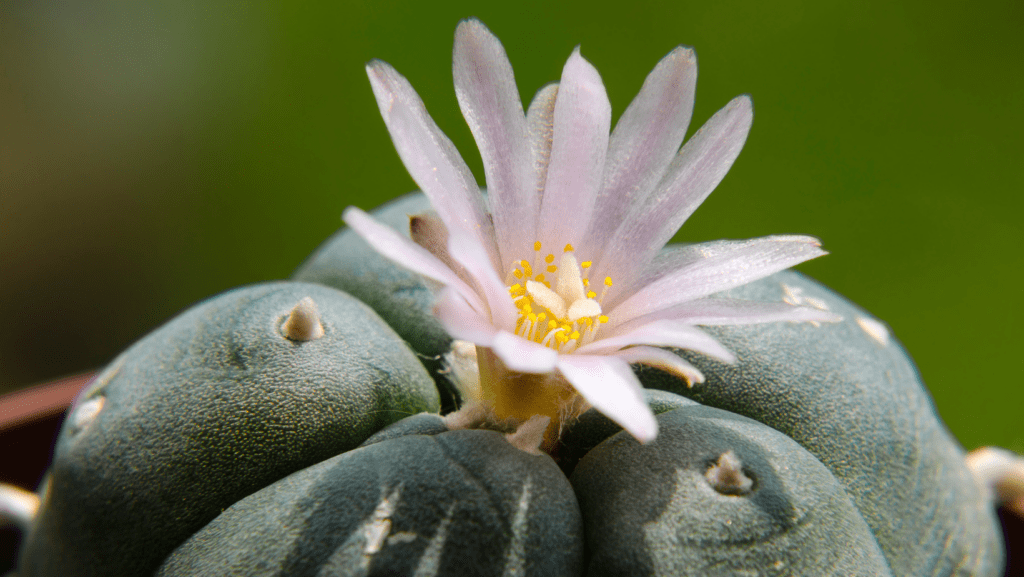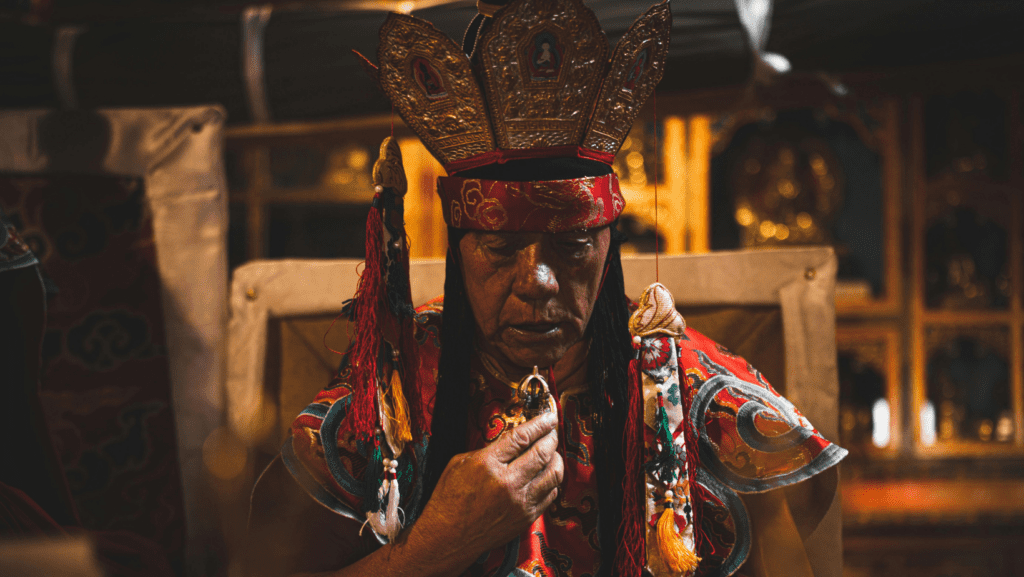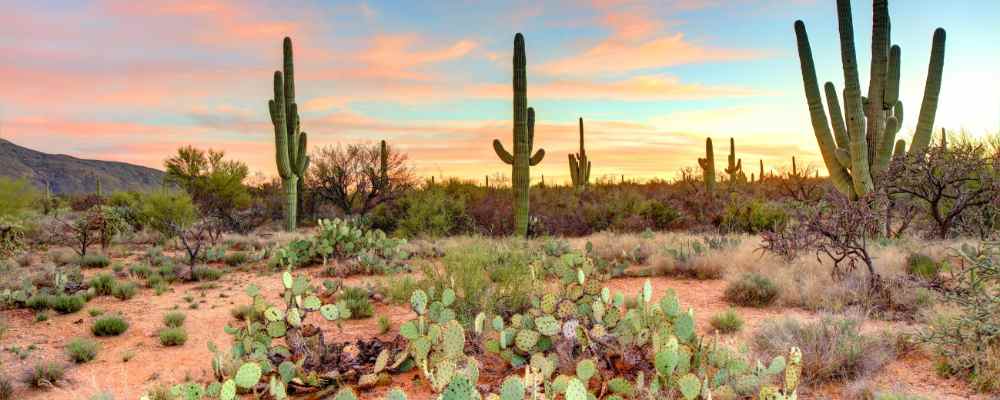The peyote ceremony is one of the most revered spiritual traditions among the indigenous peoples of North America, particularly in Mexico and in some states of the U.S., mainly Arizona, Texas, and Okhlaoma. Rooted in ancient practices, this sacred ritual involves the consumption of the peyote cactus (Lophophora williamsii), a small, spineless plant known for its powerful psychoactive effects due to its active compound, mescaline.
The ceremony remains a cornerstone of the Native American Church (NAC), a religious organization dedicated to preserving the sacred peyote tradition. For participants, the ritual offers a profound experience of introspection, emotional release, and communion with the divine. Despite legal restrictions in many parts of the world, peyote ceremonies continue to be practiced by those who hold the plant in high spiritual regard.
In this article, we will explore the history of the peyote ceremony, its role in indigenous cultures, the specific phases of a peyote healing ritual, and the spiritual insights it provides. We will also discuss the legal and environmental challenges surrounding peyote use and conservation.
What Is Peyote?

Peyote (Lophophora williamsii) is a small, spineless cactus native to the desert regions of northern Mexico and the Southwestern United States, including parts of Texas, Arizona, and New Mexico. It typically grows in rocky, arid environments, thriving in areas with limited rainfall. Unlike many other cacti, peyote is distinct for its lack of spines, and its round or pillow-shaped body ranges from greenish-gray to blue-green. Its surface presents ribs arranged in circular patterns, contributing to its unique appearance.
Peyote boasts extraordinary psychoactive effects, which come from mescaline, a naturally occurring hallucinogen. These components are concentrated in the button-like tops of the cactus, which are harvested either fresh or dried. The cactus is then consumed in small amounts and induces altered states of consciousness, often accompanied by vivid visual hallucinations, enhanced emotional experiences, and a deeper sense of self-awareness. The hallucinogenic experience typically lasts for several hours, during which individuals may gain profound spiritual insights and even feel a connection with the divine.
For centuries, indigenous cultures—particularly the Huichol people of Mexico and various Native American tribes—have indeed considered peyote not just a plant but a vital tool for connecting with spiritual forces and gaining deeper knowledge of the universe, nature, and the unseen aspects of existence.
The Origins and History of the Peyote Ceremony
Ancient Use of Peyote in Indigenous Cultures
The use of peyote dates back thousands of years. Archaeological evidence suggests that indigenous peoples in present-day Mexico and Texas have consumed it for spiritual and medicinal purposes for at least 5,000 years. Archaeologists have discovered remnants of peyote in ancient burial sites, cave paintings, and ceremonial artifacts, indicating its long-standing cultural significance.
Indigenous groups such as the Huichol (Wixárika), Tarahumara, Comanche, and Apache have traditionally used peyote in sacred rituals. For these tribes, peyote is more than just a psychoactive plant -it is a divine messenger that allows humans to communicate with the spirit world. The Huichol people, for example, undertake long pilgrimages to collect peyote in the deserts of northern Mexico, where they consider it a sacred gift from the gods.
Peyote’s association with healing and spiritual enlightenment has made it an essential part of indigenous shamanic practices. Shamans, or medicine men, have used peyote to treat various ailments, facilitate vision quests, and guide individuals through personal transformations. The plant’s psychoactive effects enable access to higher consciousness, allowing participants to receive guidance from ancestral spirits.
The Rise of the Native American Church (NAC), the "Peyote religion"
In the 19th century, as indigenous communities faced increasing persecution from European settlers and government forces, many of their religious traditions, including peyote rituals, were suppressed. However, in the late 1800s, the Native American Church (NAC) was established as a means of protecting and formalizing the practice of peyote ceremonies. The NAC provided a structured spiritual framework that integrated Christian elements with indigenous peyote traditions, allowing the practice to survive amidst growing external pressures.
Today, the Native American Church remains the largest religious organization that actively uses peyote in its ceremonies. The NAC has been instrumental in securing legal protections for peyote use among Native Americans, particularly through the American Indian Religious Freedom Act of 1978. This legislation acknowledged the religious significance of peyote and granted exemptions for its use within ceremonial contexts.
While the NAC primarily serves indigenous communities, there has been increasing interest in peyote rituals among non-Native individuals. However, traditional practitioners emphasize that peyote should be approached with deep respect and an understanding of its sacred role in indigenous spirituality.
What Happens During a Peyote Ceremony?

Preparation and Setting
A peyote ceremony follows a precise structure and specific traditions passed down through generations. The setting is often a tipi or ceremonial lodge, creating a sacred space where participants can focus on their spiritual journey. The ceremony typically takes place overnight, starting at sunset and concluding at dawn, symbolizing a journey from darkness to light—literally and metaphorically.
The leader of the ceremony, known as a roadman or medicine person, guides participants through the ritual. They bless the peyote, offer prayers, and guide the ceremony with purity and intention. Participants should prepare mentally and spiritually before the ceremony, often through fasting, meditation, or setting a clear intention for their experience.
Consumption of Peyote Mescaline
People usually consume peyote in one of the following ways:
- Chewed raw: The small, disc-shaped "buttons" of the peyote cactus are chewed and swallowed.
- Brewed as tea: Dried peyote is boiled in water to create a bitter-tasting tea.
- Powdered form: Sometimes, peyote is ground into a fine powder and mixed with water.
The effects of peyote usually begin within 30 to 60 minutes after ingestion and can last anywhere from 8 to 12 hours. Unlike recreational psychedelics, people do not take peyote for casual enjoyment; they use it in deeply ritualistic ceremonies that guide them through a transformative spiritual experience.
Peyote Mescaline: Spiritual and Emotional Effects
The peyote healing journey is highly individual, but common experiences include:
- Vivid visions and heightened perception: Participants often report seeing intricate patterns, sacred symbols, and deeply meaningful imagery.
- Profound emotional release: Many experience deep introspection, allowing them to confront past traumas or gain insights into personal struggles.
- Connection with nature and the divine: The mescaline peyote fosters a sense of unity with the universe, creating a feeling of harmony with the natural world.
- Healing and renewal: The ceremony cleanses both body and soul, promoting spiritual and emotional well-being.
Music plays a significant role in the ceremony, with drumming, chanting, and sacred songs helping to guide participants through their journey. The rhythmic beats help individuals stay grounded while experiencing the effects of peyote.
Peyote as a Sacred Teacher
In many indigenous traditions, peyote is a teacher and healer rather than just a hallucinogenic plant. The Huichol people, for example, refer to peyote as Hikuri, considering it a deity that imparts wisdom and guidance.
Those who partake in a peyote ceremony often describe it as a deeply humbling experience, revealing truths about their life, relationships, and purpose. Unlike synthetic psychedelics, peyote is believed to carry the spirit of the Earth, allowing for a unique, organic form of spiritual enlightenment.
The Role of Peyote in Physical, spiritual, and emotional Healing
For centuries, peyote has played a vital role in traditional medicine. Indigenous people consider it not only a sacred plant but also a powerful healing tool used to address both physical and psychological ailments. The healing properties of peyote largely stem from mescaline, the active psychoactive compound, which facilitates deep emotional release, self-exploration, and spiritual awakening.

1. Physical Healing
Traditional healers and shamans have used peyote to treat a wide range of physical conditions, including:
- Fever and infections – Peyote has been brewed into medicinal teas or chewed in small amounts to reduce fever, promote sweating, and fight infections. Some indigenous groups believe that the plant contains antibacterial and immune-boosting properties.
- Pain relief – The peyote cactus acts as a natural analgesic, particularly for headaches, joint pain, arthritis, and muscle aches. Some reports suggest that peyote helps alter pain perception, making it a valuable remedy for chronic conditions.
- Digestive issues – In small doses, peyote can help with stomach ailments, including indigestion and food poisoning.
- Wound treatment – Some indigenous cultures apply peyote topically, using its juices or ground pulp as a poultice for wounds, burns, and snake bites, believing it speeds up healing and prevents infection.
2. Mental and Emotional Healing
Beyond its physical benefits, peyote provides profound effects on mental health. The altered state of consciousness induced by mescaline allows individuals to confront inner struggles, process trauma, and gain deep insights into their emotional well-being. Some of the mental health benefits include:
- Relief from anxiety and depression – Participants in peyote ceremonies often report experiencing profound emotional clarity and a release of negative energy, which can help alleviate symptoms of depression and anxiety. The plant helps users reconnect with themselves, process difficult emotions, and develop a renewed sense of purpose.
- Healing from PTSD – In recent years, peyote has gained attention for its potential role in treating post-traumatic stress disorder (PTSD), particularly among veterans and trauma survivors. The deep introspection and emotional purging facilitated by peyote may help individuals process past traumas in a way that conventional therapies often struggle to achieve.
- Overcoming grief and emotional trauma – Many participants describe peyote as a tool that allows them to face suppressed emotions, including grief, guilt, and loss, in a supportive, spiritual setting.
3. Peyote and Addiction Recovery
One of the most remarkable applications of peyote is in addiction treatment. The Native American Church has integrated peyote ceremonies into their recovery programs, helping individuals struggling with alcohol and drug dependence. The plant allows users to:
- Induce deep self-reflection – By confronting their past behaviors and addictions in an altered state of consciousness, individuals often gain new perspectives on their struggles and feel a stronger motivation to change.
- Provide emotional healing – Peyote helps users release guilt, shame, and emotional burdens that may contribute to their addictive behaviors.
- Strengthen spiritual connection – Many participants report feeling a greater sense of purpose, self-awareness, and inner peace, which can serve as a foundation for long-term recovery.
Scientific research is still exploring the full potential of peyote in mental health treatment and addiction recovery, but numerous anecdotal accounts suggest that its therapeutic effects can be profound and life-changing when used in a controlled, ceremonial context.
Legal and Environmental Considerations
Peyote is a slow-growing cactus, and overharvesting has led to significant population declines, particularly in Texas and northern Mexico. Increased interest from non-indigenous users has raised concerns about sustainability. Many Native American leaders emphasize the importance of preserving natural peyote populations and respecting indigenous traditions.
In addition, despite its sacred status, peyote remains a Schedule I controlled substance in the United States, meaning it is illegal for general use. However, the American Indian Religious Freedom Act allows members of federally recognized tribes to use peyote for religious purposes.
Peyote holds deep spiritual significance in Mexico, too, particularly among indigenous groups such as the Huichol people, who have used it in sacred ceremonies for centuries. Recognizing its cultural and ecological importance, Mexican law protects peyote as part of the nation's indigenous heritage. While indigenous communities have long-standing traditions involving peyote, ceremonies led with deep respect for these practices allow participants to engage with its spiritual and healing properties in a meaningful way.
Authentic retreats, such as those offered by Aloee Wellness, conduct ceremonies responsibly, honoring both the ancestral wisdom and the natural environment in which peyote grows.


